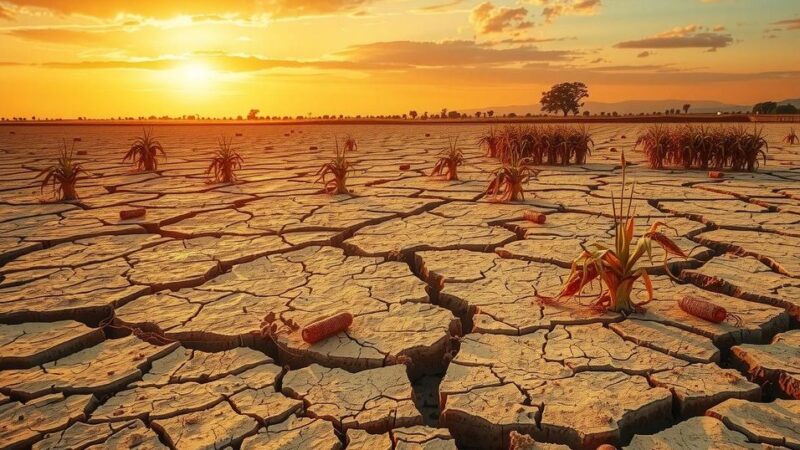A new study reveals that climate change has increased the likelihood of extreme heatwaves in South Sudan, additionally affecting women and girls disproportionately. During a February heatwave, temperatures reached 40 degrees Celsius, forcing school closures and prompting public health warnings. Experts emphasize that climate change has made such events at least 2 degrees hotter and significantly more frequent, posing enormous challenges for the population, especially given the low access to water and electricity.
A recent study indicates that man-made climate change has significantly increased the likelihood of the extreme heatwave affecting South Sudan. This phenomenon disproportionately impacts women and girls, who are already facing considerable challenges in an impoverished nation beset by instability since its independence in 2011. The ongoing political turmoil raises concerns about the potential unraveling of the peace agreement established in 2018, which ended a prolonged civil war.
During February, South Sudan experienced temperatures reaching 40 degrees Celsius (104 Fahrenheit), prompting the government to close schools in the capital, Juba. The directive followed reports of students collapsing, with an average of 12 cases reported daily. The study highlights that climate change has made the recent extreme heat approximately 2 degrees Celsius hotter and at least ten times more likely to occur.
Kiswendsida Guigma, a climate scientist and author of the study, emphasized that climate change exacerbates the already difficult living conditions in South Sudan. The heatwave presents a significant challenge since most residents work outdoors in conditions that lack adequate shelter or cooling systems. Furthermore, the availability of drinking water is critically low, and only 8.4 percent of the population had access to electricity in 2022, according to the World Bank.
Women and girls bear the brunt of the heatwave’s effects due to their roles in household tasks like water collection and cooking. Elizabeth Lodou Lochapio described the struggle of women who must continue working despite extreme temperatures. “They have to go out there to make a living despite the heat wave,” she noted, advising to stay stationary during peak sun hours.
The study further underlines that events of extreme heat exceeding 40 degrees Celsius are becoming the new normal in South Sudan, occurring every two years instead of rarely. Sarah Kew, another author of the study, affirmed this trend, indicating that the heatwave is expected to continue throughout March. This indicates ongoing challenges for the South Sudanese population, which is struggling to adapt to a rapidly changing climate.
The findings of the study show that climate change is directly contributing to the increasingly severe heatwaves in South Sudan, intensifying the hardships faced by its citizens, particularly women and girls. The implications of these findings are profound, highlighting urgent needs for adaptation measures in a nation already grappling with political and economic instability. As the frequency of such extreme temperature events raises serious concerns for public health and livelihoods, addressing these climate challenges becomes critical for South Sudan’s future.
Original Source: www.france24.com






